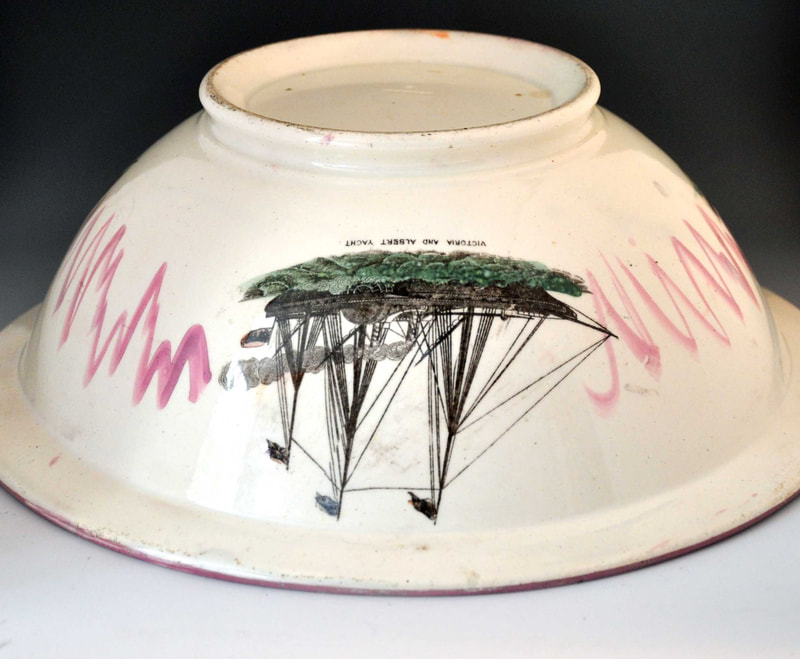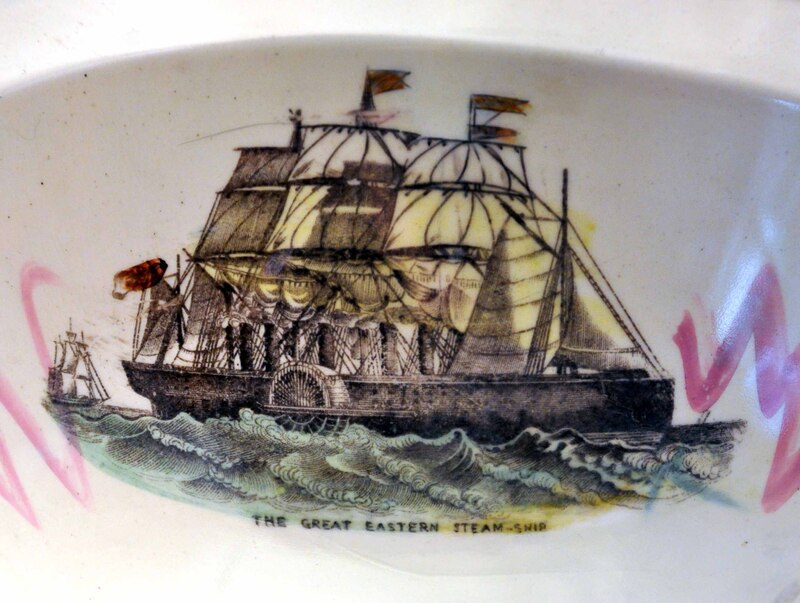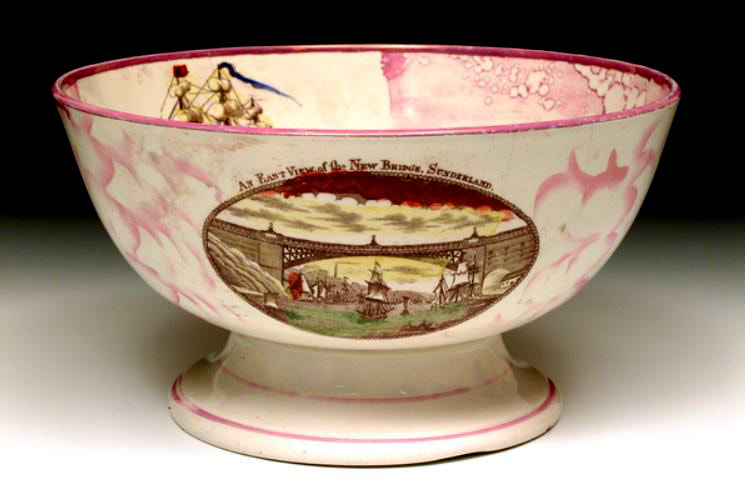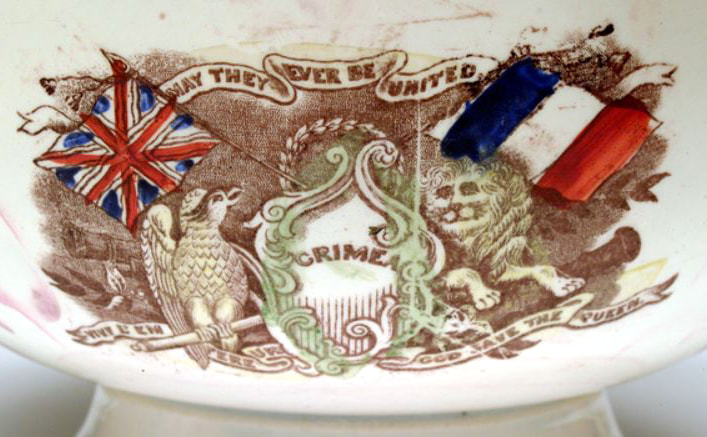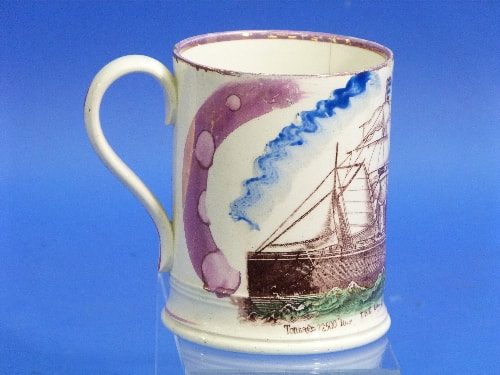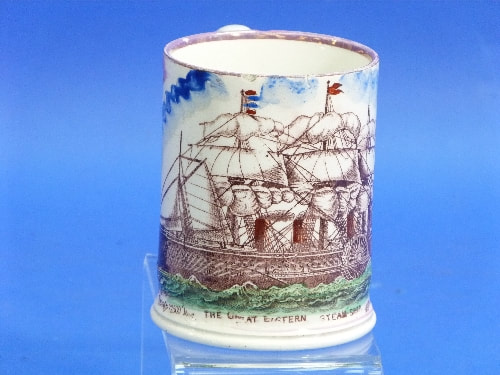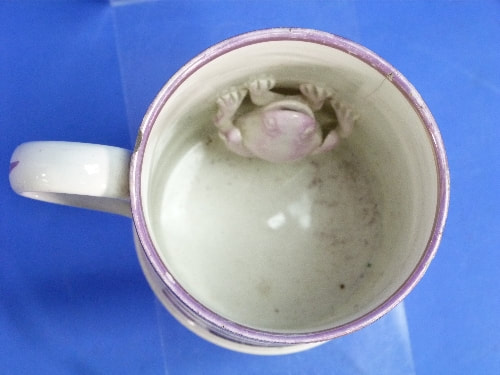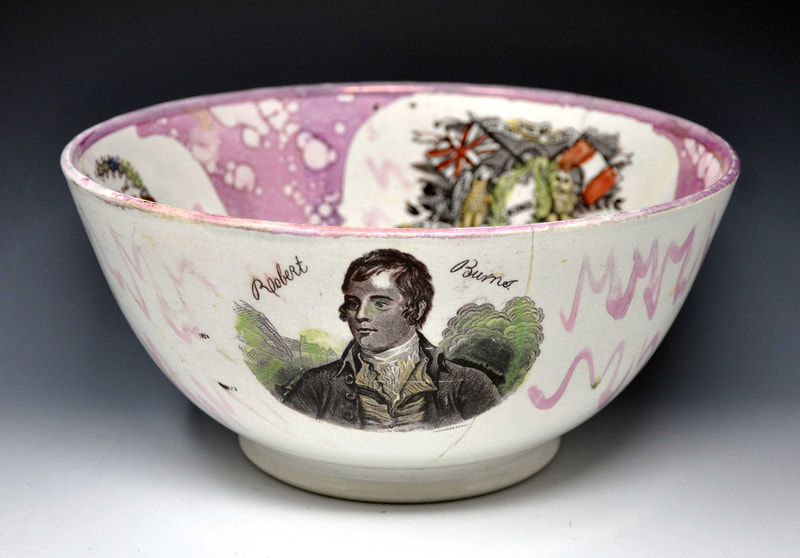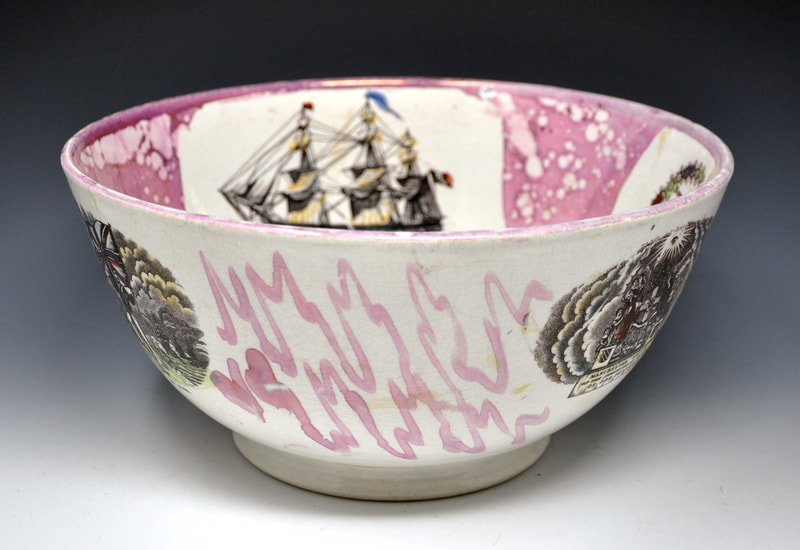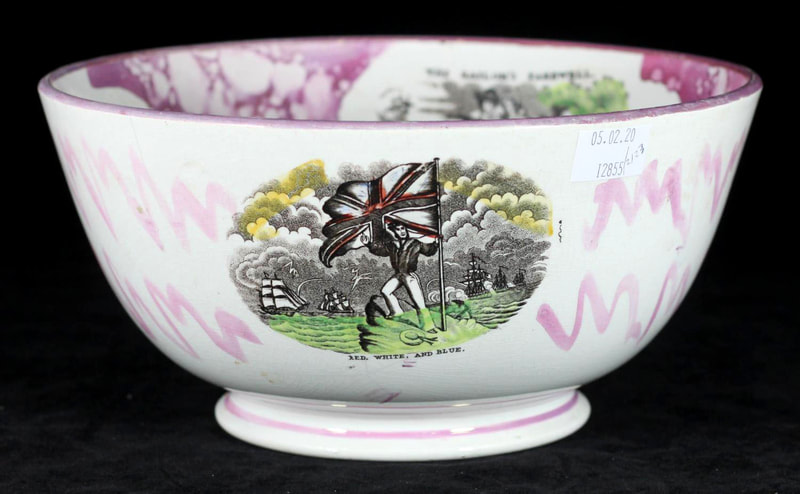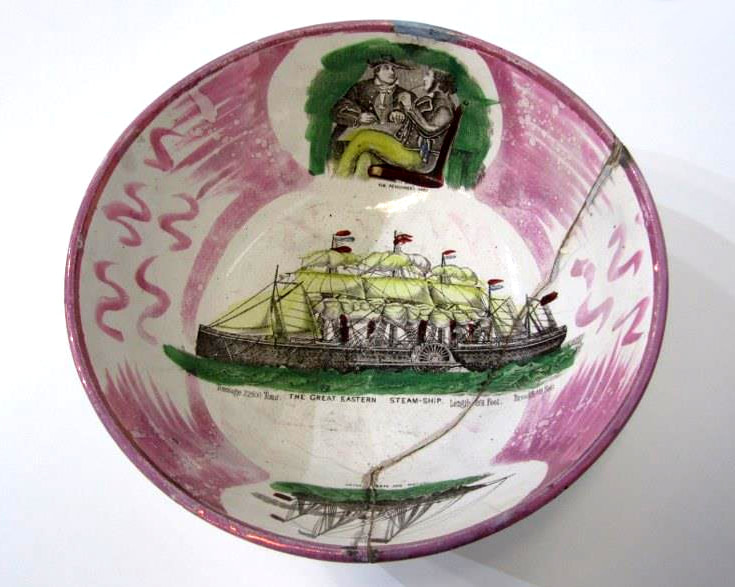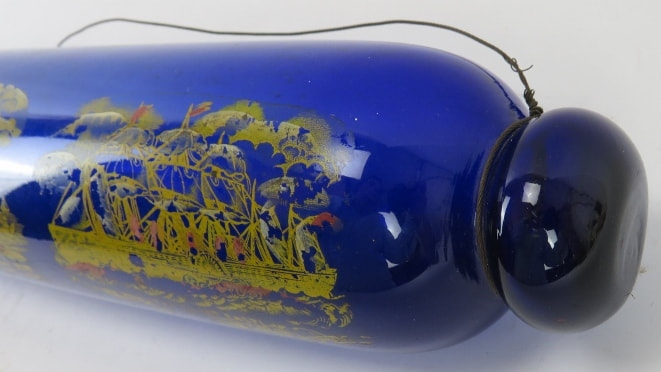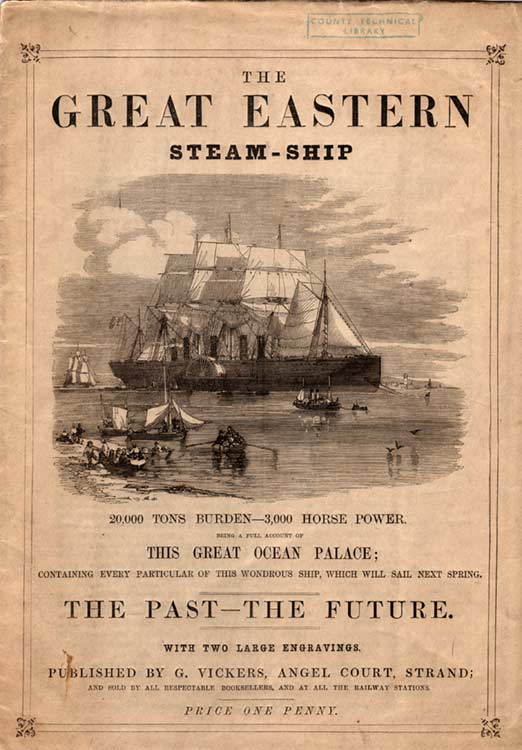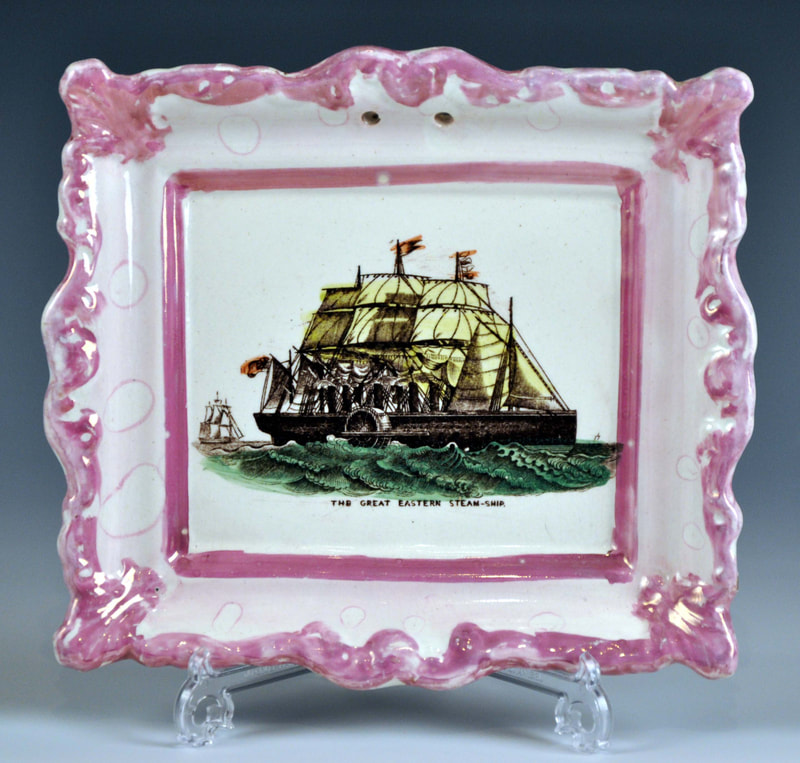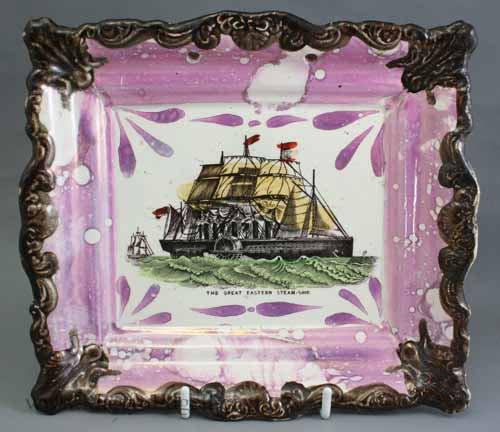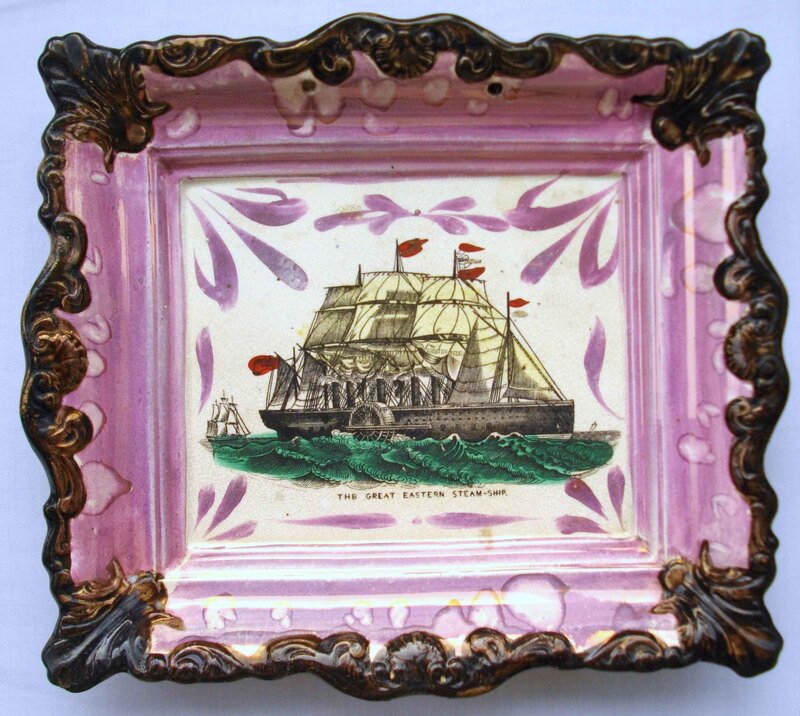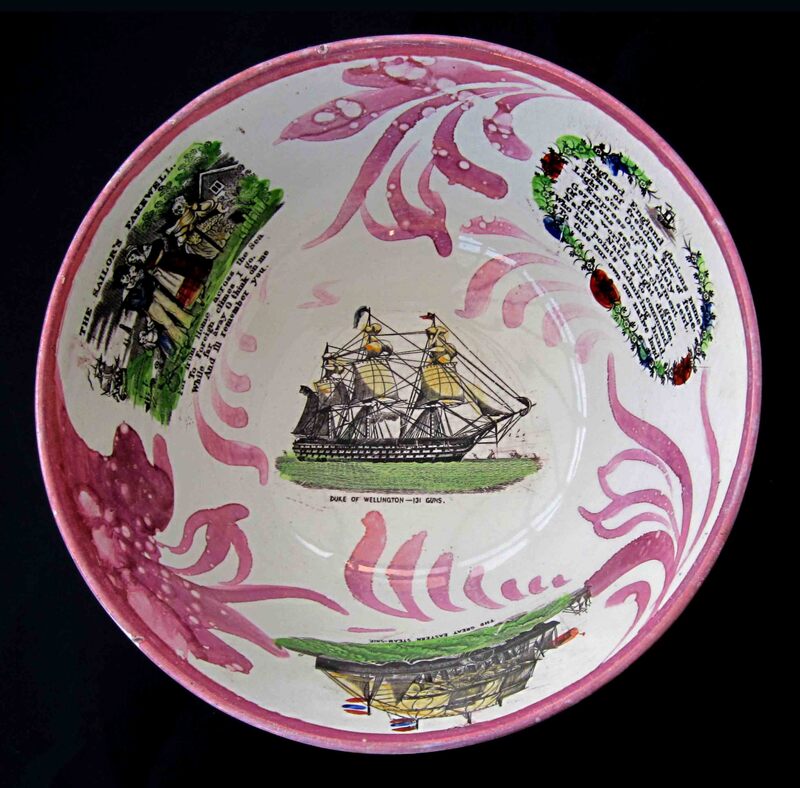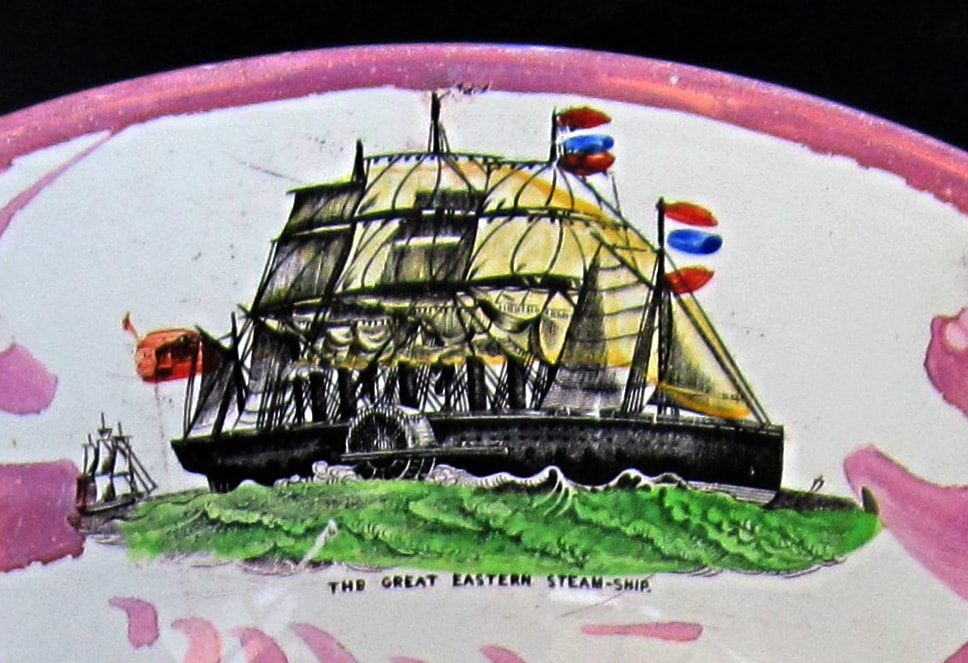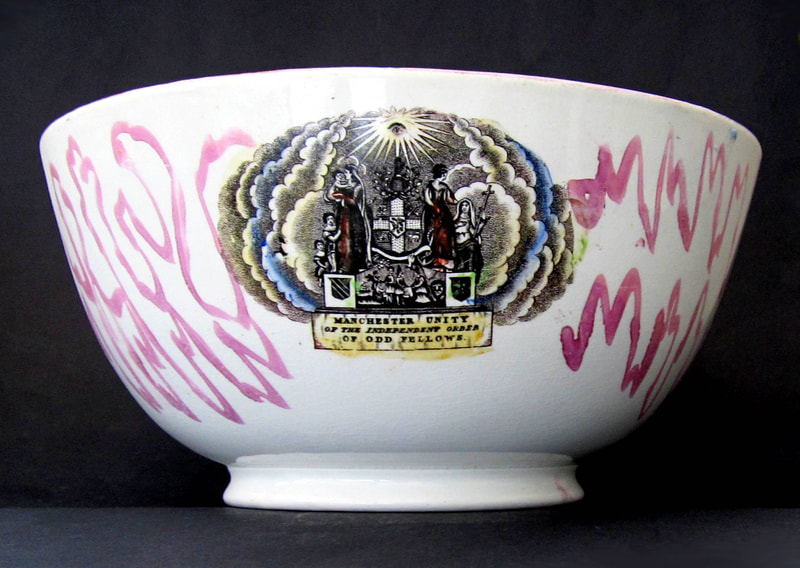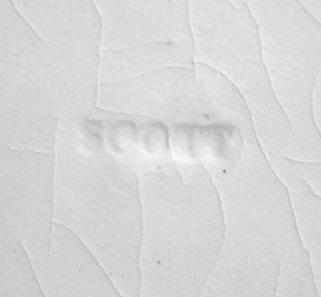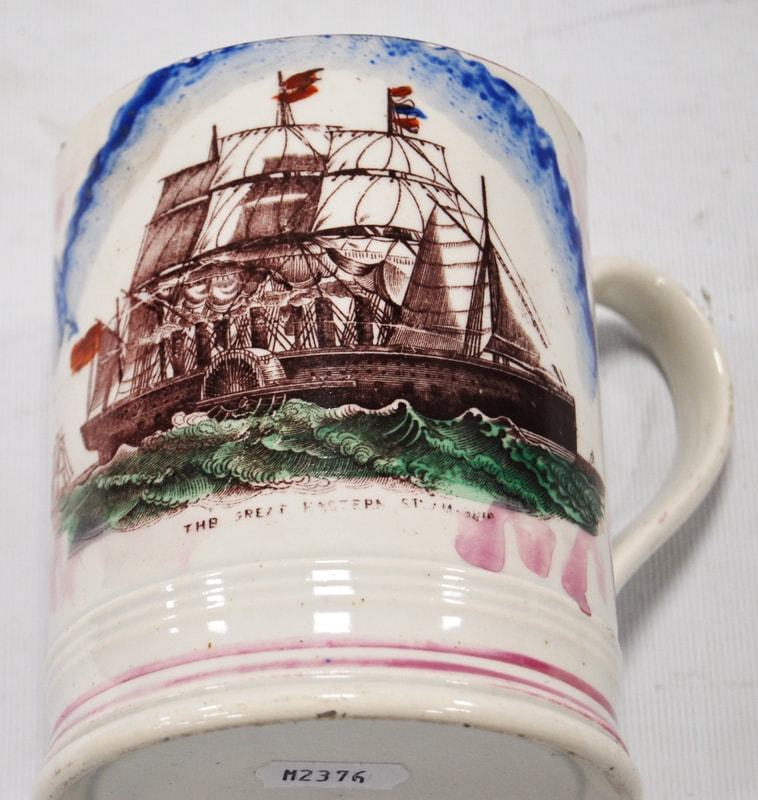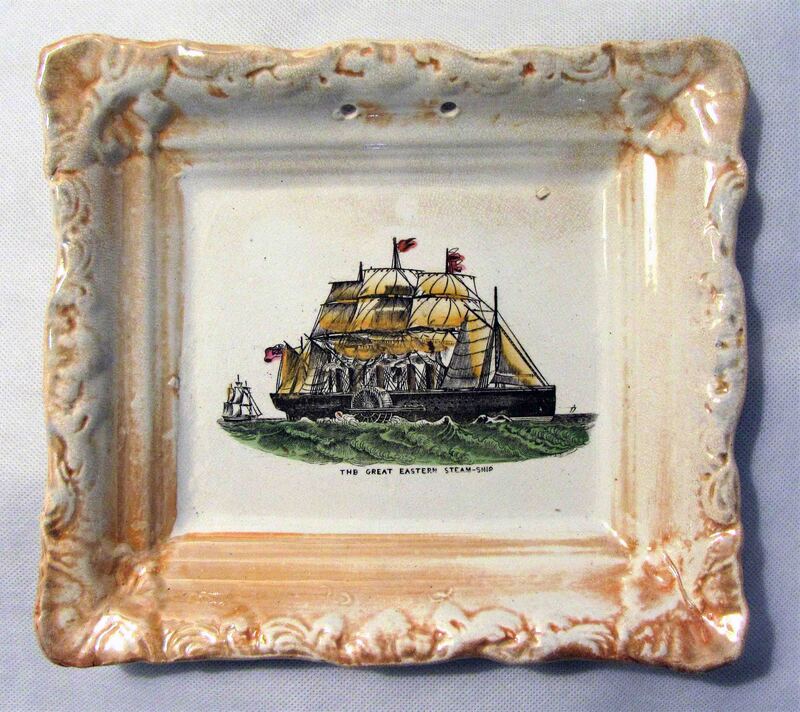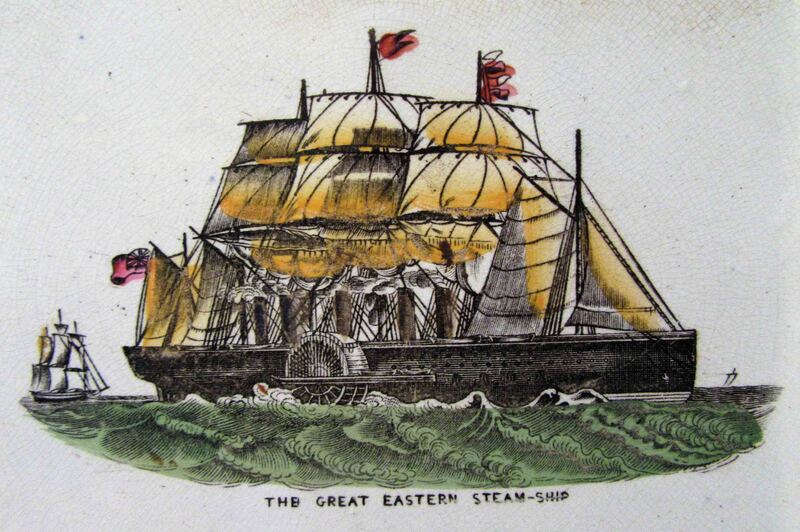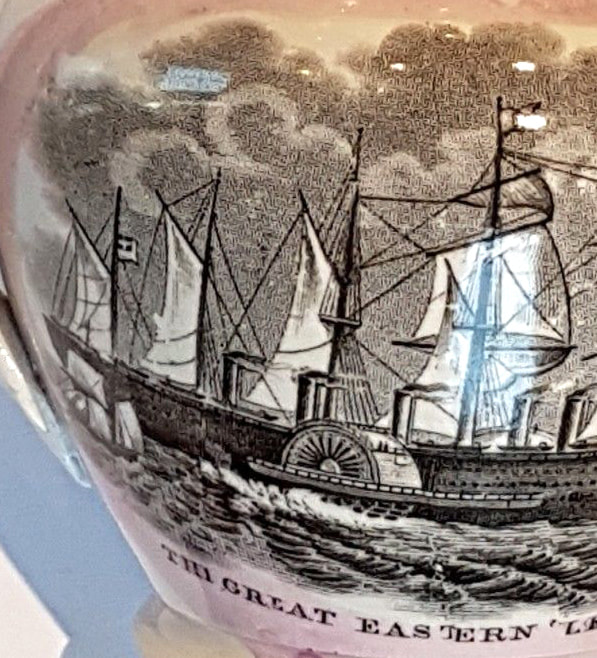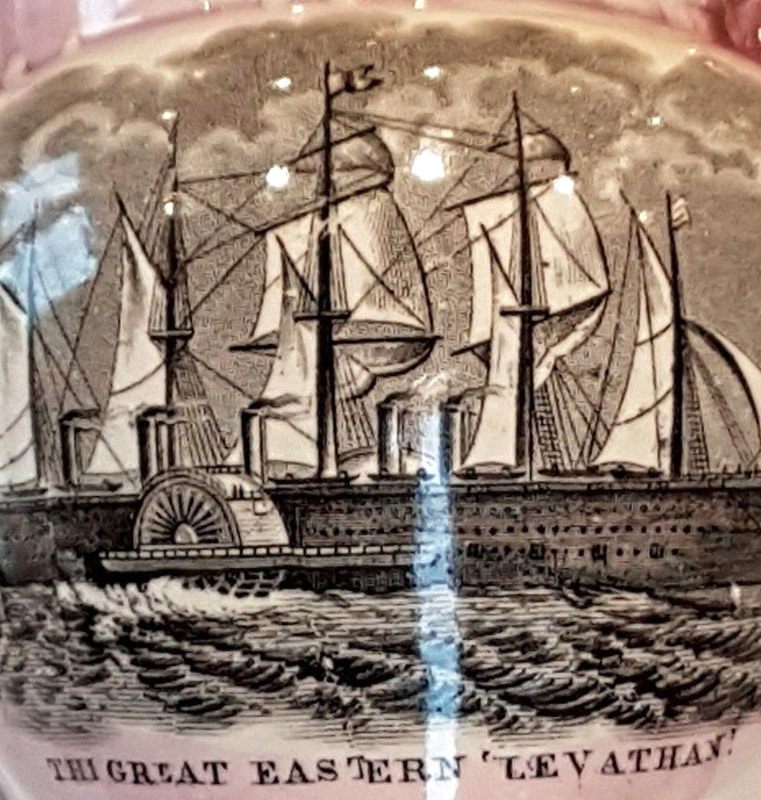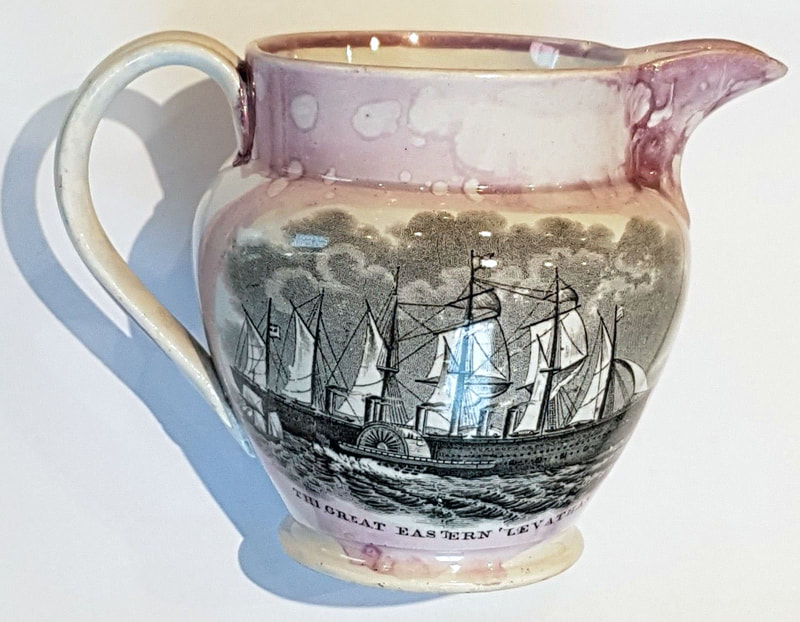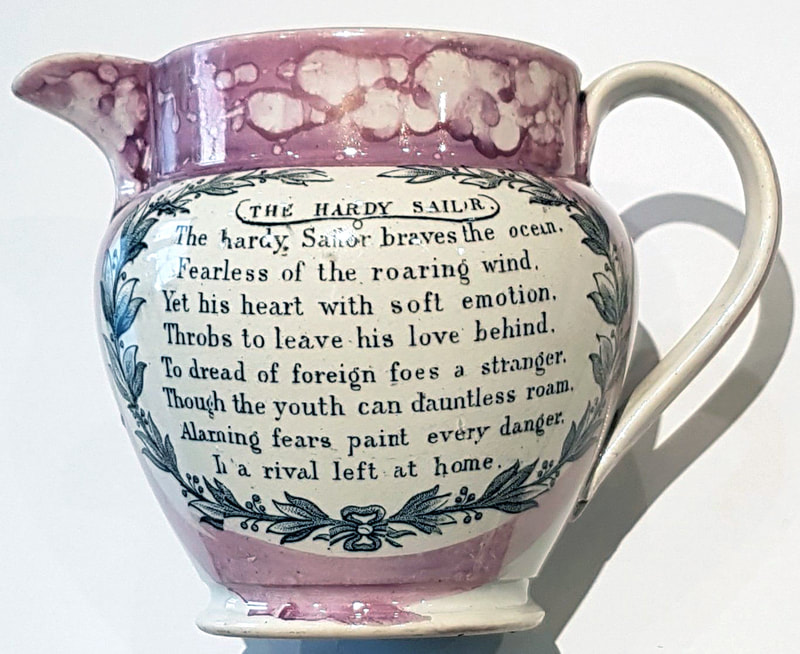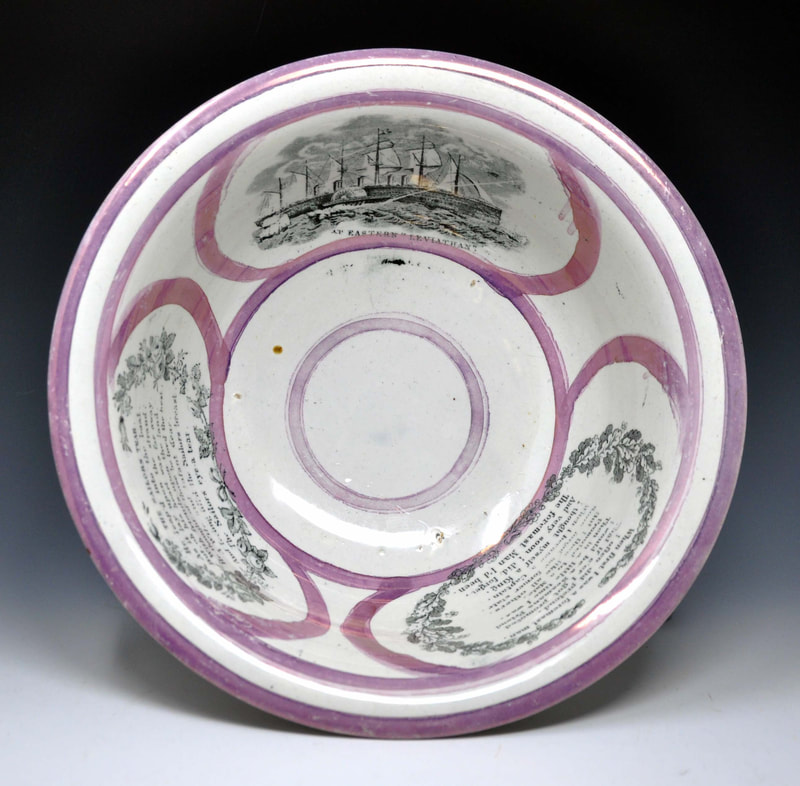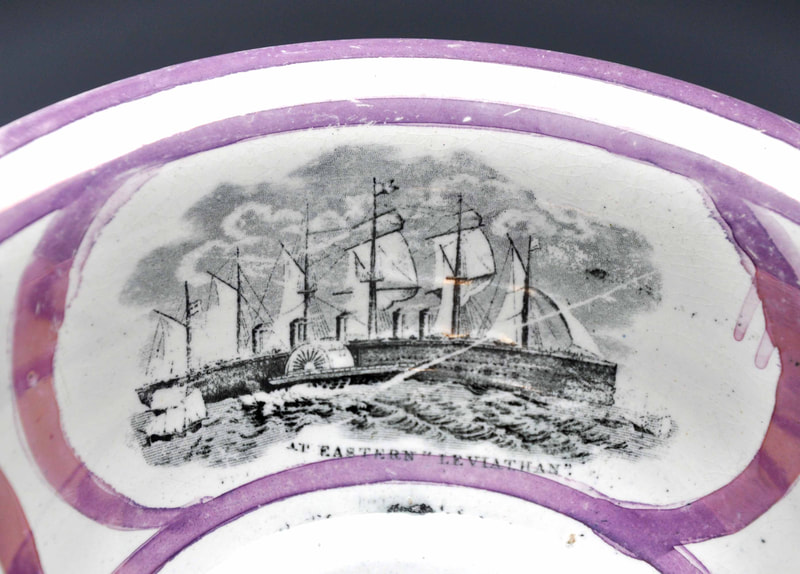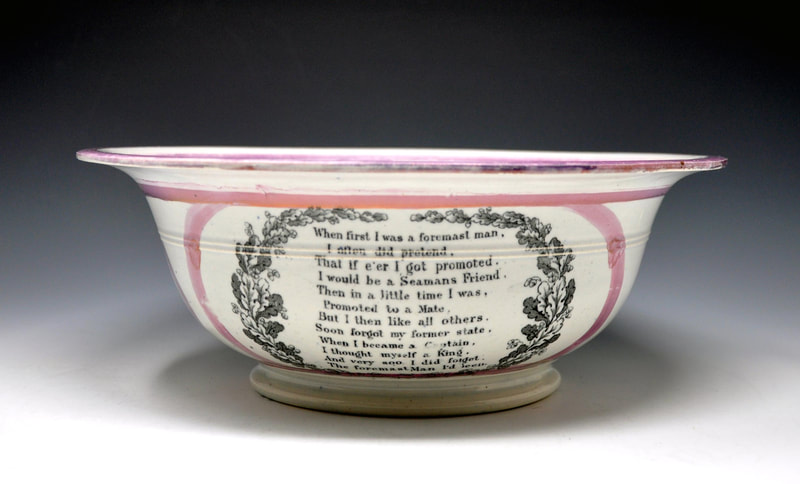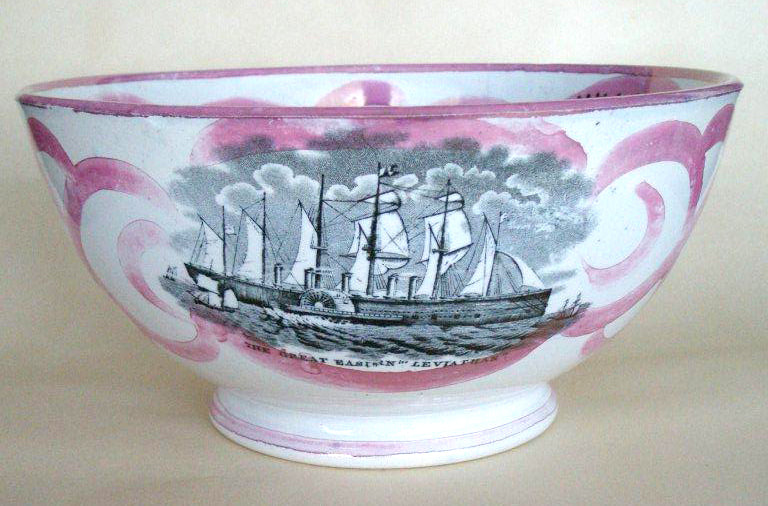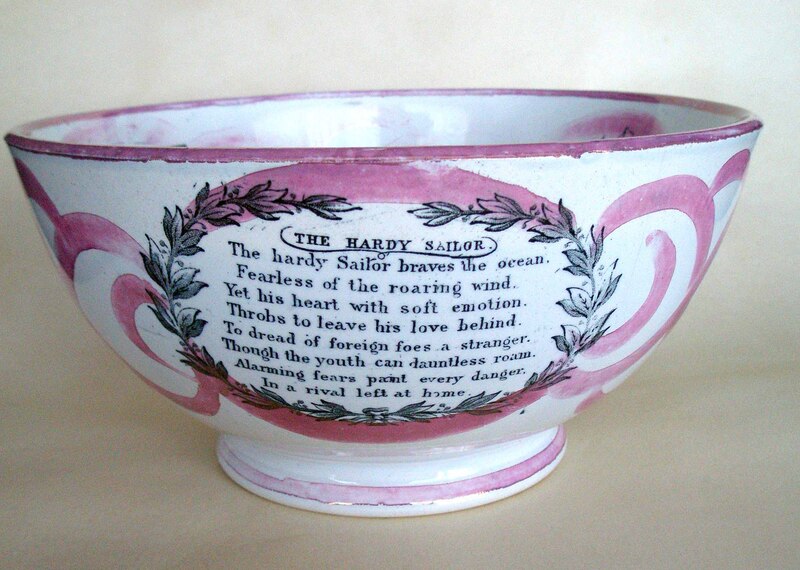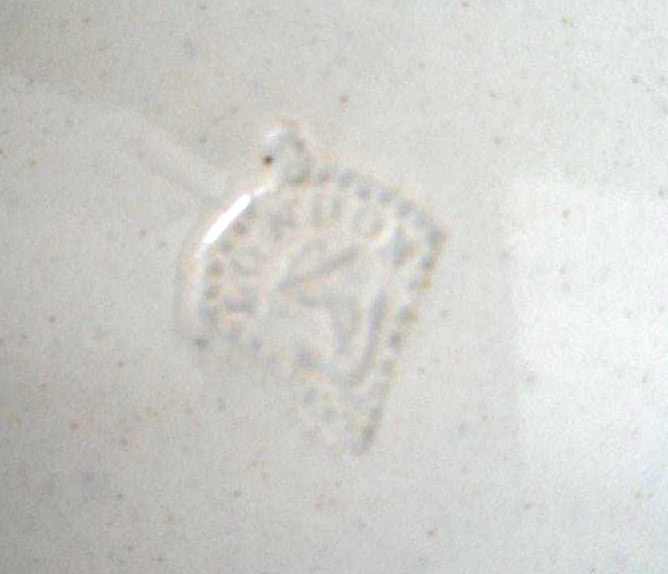The Great Eastern Steam-Ship – Sunderland
The SS Great Eastern was designed by Isambard Kingdom Brunel and the largest ship ever built at that time. She was launched in London in 1858, and had the capacity to carry 4,000 passengers from England to Australia without refuelling.
Huge thanks to Gilda Elizabeth for getting in touch with this chromolithograph of "The Great Eastern Afloat", 1857, from a drawing by Edwin Weedon. Gilda did a bit of digging and discovered that her print appeared as a supplement to The Illustrated London News, Sep 17, 1859. The image as shown below is trimmed, the original having the title: 'AFTER EDWIN WHEEDON. THE GREAT EASTERN.–Afloat. LENGTH,– 695 Feet. BREADTH,– 118 Feet. TONNAGE,– 22500 Tons.'
Moore & Co's Wear Pottery and Scott's Southwick Pottery
This is the largest transfer found on North East pottery that I have recorded, and measures 9.5 inches across. Gilda points out that the engraver has added a couple of hundred feet to the ship's length, the transfer reading '891 Feet' (as opposed to the 695 Feet on the print above).
The transfer appears on bowls with both Scott and Moore impressed marks. The most obvious explanation being, as Baker writes, that 'Scott's supplied earthenware to Moore's Wear Pottery [...] presumably plain for decoration' (Baker page 54). This is borne out by the fact that the bowls marked Scott (see next section below) have zig-zag lustre decoration and enamelling typical of Moore's. The wash basin below has a Moore & Co impressed mark. It has a second, foreshortened, view of the ship that appears on plaques (see below).
The transfer appears on bowls with both Scott and Moore impressed marks. The most obvious explanation being, as Baker writes, that 'Scott's supplied earthenware to Moore's Wear Pottery [...] presumably plain for decoration' (Baker page 54). This is borne out by the fact that the bowls marked Scott (see next section below) have zig-zag lustre decoration and enamelling typical of Moore's. The wash basin below has a Moore & Co impressed mark. It has a second, foreshortened, view of the ship that appears on plaques (see below).
A pedestal bowl, from the Sunderland Museum & Winter Gardens, Tyne & Wear Archives & Museums collection, with a Moore & Co impress without a number beneath it. This bowl has the large Great Eastern transfer in the centre and other ship transfers, accompanied by the Crimea transfer and the New Bridge.
The blue enamel and smiling frog on the mug below are again typical features of Moore's Pottery.
Below, three large punch bowls with the SCOTT impress. Note that the transfers of Robert Burns and the Riflemen are unique to Moore's Pottery. Also, note the zig-zag lustre decoration in the shape of a letter 'M'. There's no doubt in my mind that these were 'blanks' supplied by Scott's and decorated by Moore's.
This unmarked bowl seems worth including for its less typical lustre decoration. These horizontal feathered strokes of lustre to the inside of the bowl are a feature more commonly associated with the Garrison Pottery.
Perhaps Thomas Snowball at Sheepfolds Warehouse
Baker says that Sheepfolds enamelled glass rolling pins and retailed them at 'sixpence (2.5p) each and found a ready sale with sailors visiting Sunderland'. Below a blue glass rolling pin with a smaller but very similar image of the Great Eastern to the items above.
Moore & Co's Wear Pottery and Scott's Southwick Pottery
This smaller, foreshortened view was widely used on plaques. The plaques below are unmarked, but plaques with the distinctive lustre decoration of the first below are found with the Moore & Co impress. See the Duke of Wellington/La Bretagne page for more information about the transfers on this copper plate.
A bowl with multiple 'Moore ships' and an impressed mark over the number 8.
A bowl with 'Moore ships' marked Scott. This item is more profusely decorated, like some of the plaques above. However, note that despite the SCOTT impress, the bowl has zig-zag lustre decoration, like the letter 'M' used by Moore's.
The blue enamel decoration and slightly anaemic smiling frog are very similar to the mug above with the larger transfer.
Two later plaques with orange lustre, used from about the mid 1860s. The left plaque is of a form used by Moore's and the right plaque, a form peculiar to Scott's.
The Great Eastern Leviathan – Tyneside
Attributed to John Carr & Sons, North Shields, c1860
London impressed marks were used by several Tyneside potteries. This anchor impress, with a number over the top, is found on wares reliably attributed to Carr.
On this bowl, also with a LONDON impress, the transfer is paired with more typical Carr transfers of Sunderland Bridge and Remembrance.




